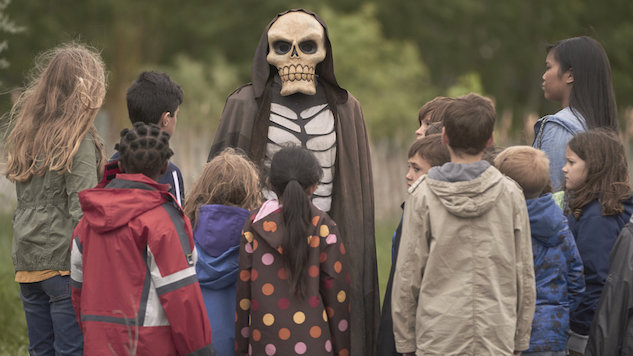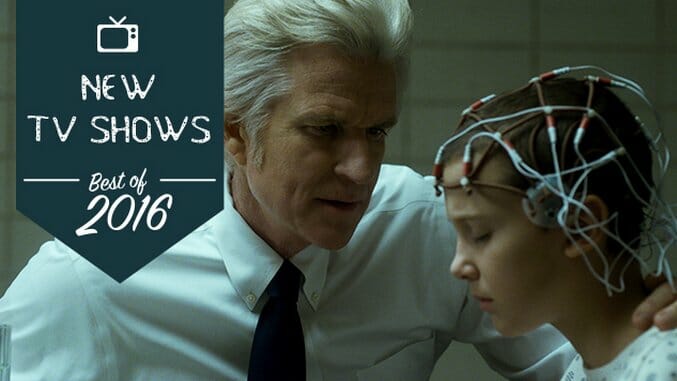
One measure of the medium’s recent growth is this list, which we might once have limited to 10 titles, or perhaps—if we were feeling generous—15. Now, even with 16 entries, the following seems almost miserly; among those that fell short in our poll were such worthies as Queen Sugar, Speechless, Hap and Leonard and One Mississippi. (We also left off anthology series American Crime Story, but not to worry—it made our list of the 25 Best TV Shows of 2016.) This is the consequence of TV’s creative fervor, the other edge of the sword: For every new show that made our list, there’s another we regret to exclude.
Still, one can take solace in the fact that the proliferation of platforms for TV storytelling has also meant a proliferation of voices, and the series herein represent a raft of sensibilities. In nearly every sense of the term—genre, style, network, format, subject matter—this year’s choices for the Best New TV Shows are more diverse than ever before, and for that we can all be thankful.
16. This Is Us
Network: NBC
When I first watched the pilot for This is Us and got to the big reveal—Rebecca (Mandy Moore) and Jack (Milo Ventimiglia) are the parents!—I thought, “Well, that’s clever. But now what?” The freshman drama surprised me by playing with time much the same way Lost did. While unfolding the stories of siblings Kevin (Justin Hartley), Kate (Chrissy Metz) and Randall (Sterling K. Brown) in the current day, the show bounces back and forth in the past as we visit key moments in their upbringing. The performances are extraordinary. Hartley brings depth and humor to his could-be-clichéd character. Brown (also so great this year in American Crime Story) is powerful screen force. Metz makes you feel her struggle and swoon over her blossoming romance. There’s no doubt this is Ventimiglia’s career-defining role. And I’ll confess right now that I completely underestimated Moore’s talents. The producers clearly delight in shocking their audience with each twisty reveal. Yes, the show does seem determined to make you ugly cry in every single episode, and some of the aging makeup needs work (I’m talking to you, Jon Huertas). But at its root, This Is Us is a touching and beautiful exploration of how our families and our childhoods shape us. Get your tissues out. Amy Amatangelo
15. Channel Zero
Network: Syfy
Both Stranger Things and Preacher certainly have some horror elements, but Channel Zero was in no uncertain terms the greatest new horror show of 2016. Drawing inspiration from the Internet urban legends known as “creepypastas,” the anthology series assembled a deeply unsettling locale, featured solid performances (especially from Paul Schneider) and wove a steadily mounting tapestry of dread. I can’t stress enough how refreshing the format is—an hourlong horror drama that is seriously attempting to frighten, one that’s compressed into a mere six episodes, with the audience knowing in advance that they’ll get a real conclusion. The result, therefore, is almost like a prestige horror miniseries: It reminds one of nothing so much as Stephen King’s IT, with its simultaneous stories in different timelines and themes of horror built around the moments when childhood psyches are shattered. It’s a series that featured one of the year’s best, genuinely frightening pilot episodes, which pulls its protagonist back into a web of small-town secrets and supernatural mystery, full of nightmare-inducing imagery and a persistent feeling of uneasy familiarity. Watching Channel Zero: Candle Cove is a bit like walking past the an abandoned house you were afraid of in your childhood, and then suddenly remembering the repressed story of the one time you ventured over the threshold and discovered the ghosts within. Here’s hoping that Season Two, The No-End House, can keep up the same visual flair and macabre atmosphere. Jim Vorel
14. The Get Down
Network: Netflix

“Joyful” doesn’t begin to describe Baz Luhrmann and Stephen Adly Guirgis’ ode to the birth of hip-hop’s aesthetic in the 1970s, but we exhausted all of the other applicable superlatives in our episodic reviews. Suffice to say that The Get Down delivers, both as a chronicle of and tribute to an era: It’s celebratory, a dizzying six-hour block party where darkness lurks on the periphery, ever ready to ruin the fun when the fun needs to take a minute to catch its own breath. We aren’t talking pure sugar, here, and for good reason—made too sugary, the show would lose its palatability—but The Get Down chooses to emphasize positivism and hope instead of doom, even though anybody with a faint grasp of the history of both hip-hop and New York City knows that there can’t possibly be a strictly happy ending to this narrative. (We’ll see when the season’s second half premieres in 2017.) Andy Crump
13. Search Party
Network: TBS
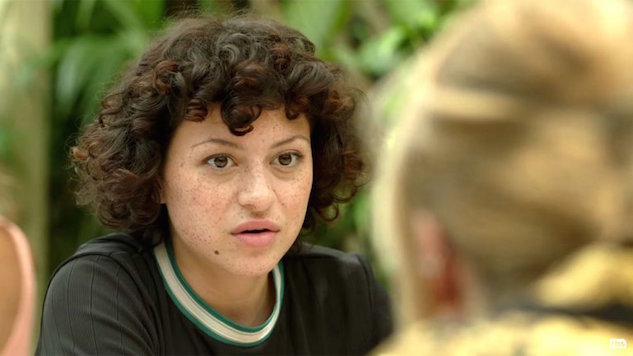
Along with Wyatt Cenac’s People of Earth and Full Frontal with Samantha Bee, Search Party, from co-creators Sarah-Violet Bliss, Charles Rogers and Michael Showalter, marks the metamorphosis of TBS into fertile ground for comic invention. Mean-spirited, mysterious, recklessly funny, and relentlessly eccentric, Search Party follows Dory (the superb Alia Shawkat), her boyfriend (John Reynolds), and their self-obsessed friends (Meredith Hanger and John Early, perfectly slimy) as they pursue an acquaintance from college who’s gone missing. At once a merciless critique of TV’s one-dimensional millennials and the fullest distillation of the trope, the series might seem derivative— it’s as if you blended Broad City, High Maintenance, and Without a Trace into a sorrow-salted margarita—were it not for its distinctive dark heart. Poised on the precipice of genuine terror, of the sort that other entries in its burgeoning subgenre comfortably skirt, Search Party’s center of gravity is the world’s inky, sinister underbelly, and one woman’s desperate, even deranged effort to change it. Matt Brennan
12. Underground
Network: WGN America

Before Underground, I’d like to think that I knew that TV could accomplish quite a bit. But after Underground’s first season, I know that TV can change history itself, as well as something just as powerful—language. What is a “slave”? What was a “slave,” in America? It’s not as if the WGN America series, from creators Misha Green and Joe Pokaski, and executive producers John Legend and Anthony Hemingway, is the first work of art to demand that we see black American “slaves” as humans, first. It’s that, in attempting to create a compelling framework, Underground is the where truly human flaws and characteristics in enslaved people—like jealousy, sexual desire, vengeance, villainy, anger, heroism, spirituality, contentment—are explored with such great depth. Green, Pokaski, and their brilliant writers dared to break away from traditional slave narrative formulas, where slave = good victim, and master = bad victimizer.
Had they stuck with such a formula, I suspect they still would have created one of the most important and compulsively watchable shows of 2016. But because they dared to break away, they created one of the most entertaining and jaw-dropping series as well—and in doing so, sent a powerful message about the difference between a slave and an enslaved person. My tongue is still getting used to saying the latter instead of the former, but my brain is already beginning to see the difference. What was an enslaved black person, in America? After Underground, I can imagine an enslaved person as a small boy, refusing a piece of candy from his half-brother and future “master” (Maceo Smedley as James). I imagine dances and yellow ribbons (Jurnee Smollett-Bell as Rosalee). I imagine blood spilled for the sake of a map to freedom, faked injuries and tattoos on top of lashings (Aldis Hodge as Noah). I imagine flames to cotton, and lost men looking for redemption—or, simply, a way out (Alano Miller as Cato). And I imagine women like Underground’s most compelling character of all, Ernestine (Amirah Vann), opening bottles in wine cellars, bathing women in tubs and praying in the dark before and after taking matters into their own hands. In addition to giving us an incredible series with heart-stopping storylines and performances, Underground gave us permission to re-imagine the past, and—perhaps most importantly—re-envision the future. Your favorite show could never. Shannon M. Houston
11. The Girlfriend Experience
Network: Starz

Like many of the shows on this list, and much like Starz’s acclaimed Outlander, The Girlfriend Experience came out of the gate fully formed. There were no signs that the show—an abstract, tense and often confounding look at Christine (Riley Keough), a high-end escort who’s also making her way up the corporate ladder at a law firm—needed any time to find its footing. Instead, The Girlfriend Experience delivered 10 tightly wound episodes that used their half-hour runtime to ratchet up the tension until it was almost unbearable. In an age of TV that often privileges either instant gratification or contrived delayed gratification, The Girlfriend Experience found something special in the organic mystery of Christine. The show, paced with expert precision by directing and writing duo Amy Seimetz and Lodge Kerrigan, is a character study like no other. Keough’s taut and sometimes silent performance keeps Christine at a distance while also giving us small insights into her mental state as she grapples with the issues of power, identity and sexuality that come with her newfound career path. The Girlfriend Experience is unlike anything else you’ll watch this year, refusing to hold the audience’s hand as it unravels not only a twisty plot, but the threads that make up Christine’s complicated psyche. Kyle Fowle
10. Better Things
Network: FX
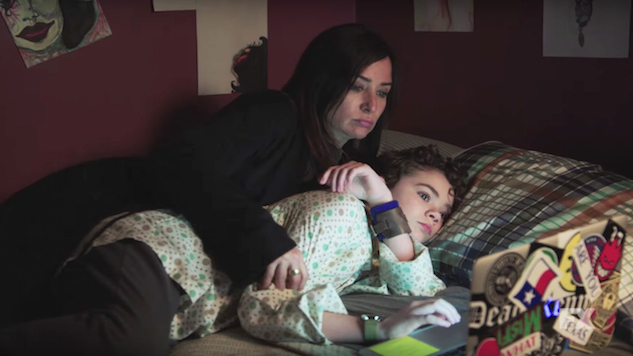
Co-created by Pamela Adlon and Louis C.K., Better Things never generated the excitement of its FX counterpart, Atlanta, but it’s no less novel for elaborating a multigenerational portrait of women in which sex and romance are not the determining factor in life’s equation. The series’ debut season, in which men largely remain on the margins, is far more interested in the testy, soused relationship Sam Fox (Adlon) maintains with her mother (Celia Imrie), with the wan roles she’s offered as a moderately successful middle-aged actress, with the ceaseless chaos of single motherhood. Indeed, as Sam raises Max (Mikey Madison), Frankie (Hannah Alligood) and Duke (Olivia Edward), she emerges as the flawed “Superman” of the brilliant season finale: Half mournful and half expectant, she’s committed, despite the obstacles, to squaring the same feminist space for her three children that Better Things does for women on TV. Matt Brennan
9. The Good Place
Network: NBC
Some of the best sitcoms in history are about bad people. M.A.S.H., Seinfeld, Arrested Development: It’d be hard to argue that the majority of their characters aren’t self-involved, intolerant or downright assholes. It’s far, far too early to enter The Good Place into any such pantheon, but it’s relevant in pinning down why the latest comedy from Michael Schur (The Office, Parks & Recreation, Brooklyn Nine-Nine) feels simultaneously so cozy and so adventurous.
Fitting into a middle ground of sensibilities between occupational comedies like NewsRadio and the sly navel-gazing of Dead Like Me, The Good Place is the rare show that’s completely upfront about its main character’s flaws, creating a moral playground that tests Eleanor’s worst impulses at every turn. Played by Kristen Bell at her most unbridled, she’s a vain, impish character—the type of person who’ll swipe someone’s coffee without a second thought, then wonder why the universe is plotting against her. She’s a perfect straight woman in an afterlife surrounded by only the purest of heart, but the show doesn’t hold it against her. If anything, following in the grand tradition of sitcoms, the show knows that we’re all bad people at one time or another. Michael Snydel
8. Preacher
Network: AMC
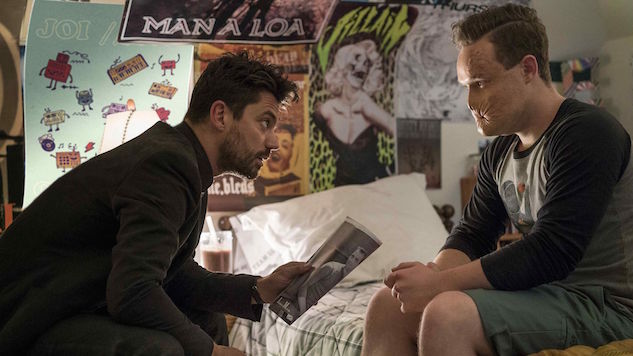
On paper, Preacher looks like a nigh-on impossible comic to adapt for TV, even in an era of comic ascendancy and the horror genre thriving on the small screen. Sure, The Walking Dead continues to pull down absurd viewership numbers, but Preacher? The weirdness of the series makes The Walking Dead look like Fuller House, and Season One was certainly in no rush to explain to the audience exactly what was going on with its central plot. Indeed, Preacher showed some pretty impressive restraint in 2016, and instead allowed audiences to grow immediately attached to its arresting characters: Jesse (Dominic Cooper), Tulip (Ruth Negga), Cassidy (Joseph Gilgun), Eugene (Ian Colletti), Quincannon (Jackie Earle Haley) and the pair of bumbling angels, Fiore (Tom Brooke) and DeBlanc (Anatol Yousef). The casting is the series’ impeccable strength: Cooper handles the very tricky Jesse Custer with aplomb, fleshing out a multifaceted man who is lovable, funny, remorseful and corruptible, but ultimately duty-bound. Negga’s Tulip, meanwhile, immediately became one of TV’s most vivacious characters, presaging her possible Oscar nomination in Jeff Nichols’ Loving. It’s a series that started strong, immediately established its own brand of sick humor tempered by visceral violence, and then launched its story into an entirely new stratosphere via the season finale. Season Two of Preacher will look very different, but it’s likely to remain one of the most distinctive shows on TV. Jim Vorel
7. Marvel’s Luke Cage
Network: Netflix
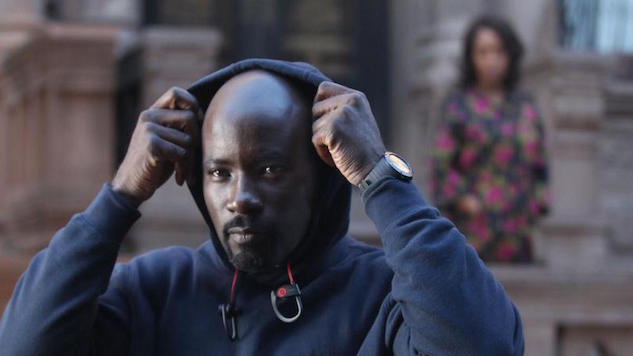
Marvel’s third Netflix venture isn’t perfect—the structure of its villain hierarchy needed some serious recalibration—but it is good, very good in fact, and most of all it’s ballsy. Who writes a superhero show around a naked discussion of what it means to a black American in 2016? Luke Cage is obviously a Marvel product, but it’s also the product of its creator, Cheo Hodari Coker, and its cast, including Mike Colter, Mahershala Ali, Alfre Woodard, Simone Missick, and Erik LaRay Harvey (plus appearances by Frankie Faison, Ron Cephas Jones and, of course, Method Man): The series has more flexibility in addressing its subject matter thanks to its platform, but it’s hard to imagine that it’d speak as loudly or as boldly even on Netflix without Coker driving the narrative forward. Even though he stumbles during the show’s midsection, his errors don’t add up to more than an inconvenience: Luke Cage blends its source material with a wide range of influences, from jazz to rap to horrors ripped straight from the headlines, and churns out a yarn that’s as powerful as it is irresistibly poppy. Andy Crump
6. Insecure
Network: HBO

While there’s still a long way to go before TV truly reflects our multi-cultural present, the arrival of series like Better Things, Atlanta, and this marvelous half-hour comedy are hopefully harbingers of the medium’s more diverse future. Built from the skeleton of co-creator Issa Rae’s YouTube series, The Misadventures of Awkward Black Girl, HBO’s freshman sitcom tackles an array of issues, from old chestnuts like boredom and woe in a long-term relationship to much broader concerns, like reckoning with institutional racism and individual biases in the modern workplace. (There’s also room left over for some cutting satire of the commodification and absorption of African-American culture by white people.) While her onscreen proxy is barely holding it together, Rae bears the burden of running Insecure with ease, finding a fresh perspective and flawlessly expanding upon the world of her Internet series with wit and refinement to spare. Robert Ham
5. Fleabag
Network: Amazon

TV and cinema have proffered plenty of variations on the theme of whip-smart women struggling with emotional crises while also making questionable romantic and sexual decisions. But almost none have had the raw wit and impressive depth of the BBC-born, Amazon Prime-fostered Fleabag. Writer/performer Phoebe Waller-Bridge is heartbreaking and hilarious in the role of a silver-tongued Londoner still reeling from the deaths of her mother and her best friend but stifling any negative emotions through her endless barrage of witty rejoinders and bad behavior.
Over these half-dozen half-hours, the titular Fleabag finds her steely exterior roughly chipped away as her relationships start to crumble around her, revealing just how lonely she really is. Fleabag strikes every note with poise and self-possession, never getting too maudlin or too clownish and trusting in an incredibly strong cast (particularly Bill Paterson and Olivia Colman as her withering father and evil stepmother, and Sian Clifford as her tightly-wound sister) to maintain that equilibrium. The steady hand at the wheel is Waller-Bridge herself, in a dazzling, nuanced dual performance as the writer and star of each episode, resulting in gaspingly hilarious, achingly human television. Robert Ham
4. Westworld
Network: HBO
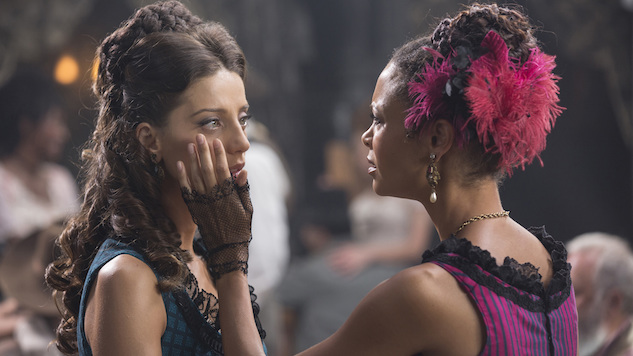
Apparently a small-screen remake of Michael Crichton’s 1973 film about a Wild West-themed amusement park populated by androids has been in development at HBO for years. It just took the creative forces of Jonathan Nolan and Lisa Joy, and the new capabilities of CGI technology, to make it a reality. Like the titular vacation spot for the rich and powerful, the surface-level thrills of shootouts and intrigue and sensual delights are filling enough. But peeling back the layers discloses much about the human condition. In this playground where visitors can act out their basest desires almost entirely free of consequences, they begin to reveal some deep, dark truths about themselves. As for the “hosts,” their slow path to self-awareness reflects just how much our current selves are formed by past experiences and how hard it can be to carve your own path. While Westworld can get a little on top of itself from time to time, the peerless ensemble cast, particularly Jeffrey Wright, Evan Rachel Wood and Jimmi Simpson, keeps every haunting episode on track. Robert Ham
3. Full Frontal with Samantha Bee
Network: TBS
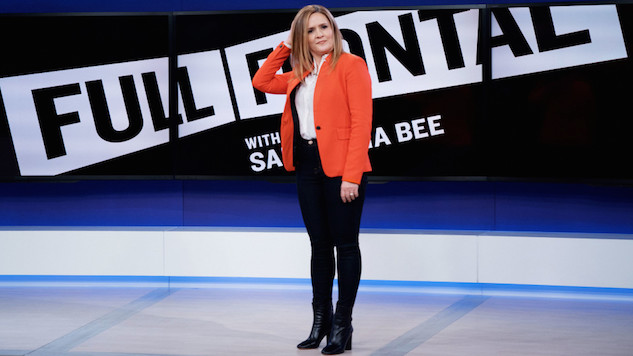
While there was plenty of talk about whether we’d be putting a woman in the White House this year, what the country most certainly needed was one in late night. The Daily Show with Jon Stewart alumna Samantha Bee’s weekly torrent of castrating anger against everyone and everything—from anti-abortion legislation and crisis pregnancy centers to Matt Lauer—Full Frontal distinguished itself from the well-worn trend of pun-heavy parody news and commentary: Her segments made her the spokesperson for every liberal-minded woman who was mad as hell and not going to take it anymore. Just as Larry Wilmore was able to do on his now-defunct Comedy Central program, The Nightly Show, the fact that Bee was speaking as a member of a social group that doesn’t enjoy the privilege of straight, white men made her remarks so much more poignant. Current Daily Show host Trevor Noah seems like a nice young chap, but Comedy Central missed an opportunity when it didn’t bother to ask Bee if she’d like to be the one to replace Stewart when he retired last year. Whitney Friedlander
2. Atlanta
Network: FX
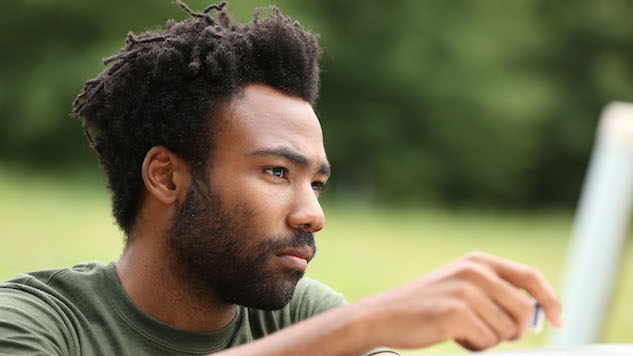
Atlanta is a series obsessed with money, but entirely uninterested in wealth. And while it’s about a rising musician, it’s a complete inversion of the lavish lifestyles of Empire and Nashville. Instead, FX’s freshman triumph spends most of its episodes in the aftermath of glamorous nights, when the high is gone and the characters are wondering how they’re going to make rent in a week. Series creator/star Donald Glover’s show doesn’t lend itself to easy classification, and it’s all the better for it. Comparing and contrasting the worldviews of two cousins, Earnest Marks (Donald Glover) and Alfred Miles (Brian Tyree Henry), the show thrives in the limbo between genres—existing at the intersection of comedy and drama, satire and realism, and experience and formula. Henry is outstanding, moving easily between comedic bravado and resignation, while Glover has never been better, manipulating his surly presence for the ideal straight man. But Atlanta’s true greatness has less to do with the clash between these two men than the shared understanding that they both need to find a way to live in this world. Michael Snydel
1. Stranger Things
Network: Netflix
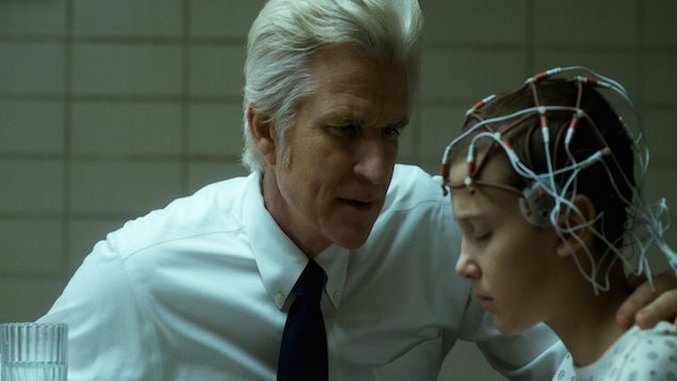
The amazing thing about Stranger Things was that, unlike so many other TV series—even other Netflix originals— it received relatively little hype and promotion before quietly debuting on the streaming service in July. Perhaps a few of us had been following its development, but to the vast majority of viewers it was just a big, mysterious blank waiting to be filled in. And that truly organic beginning to the phenomenon of Stranger Things helped propel it to become the foremost pop cultural touchstone of 2016. In terms of its impact on the collective public imagination, no other show—especially a new show—comes close.
What, then, makes Stranger Things so great? Impeccable casting, certainly: Look no further than the discovery of Millie Bobby Brown as Eleven, or David Harbour’s brilliance as the already iconic police chief, Jim Hopper. But the genre DNA of Stranger Things is simply an intoxicating, perfectly calculated thing that many viewers didn’t realize they’d even been craving. It appealed both to ‘80s film geeks weaned on the likes of John Carpenter and Amblin-era Spielberg, and to younger audiences discovering the joy of that nebulous sci-fi/horror/adventure mishmash for the first time. Everyone found a character to identify with. Mothers saw themselves in Joyce’s determination to take personal agency in the disappearance of her son. Men idolized Hopper’s no-nonsense wisdom and one-punch knockout power. And we all bore witness to the glory of Steve’s hair and upswell of public support for poor Barb. With Season Two quickly approaching, we can only hope that Netflix manages to catch lightning in a bottle twice as we return to plumb the secrets of the Upside Down. Jim Vorel

